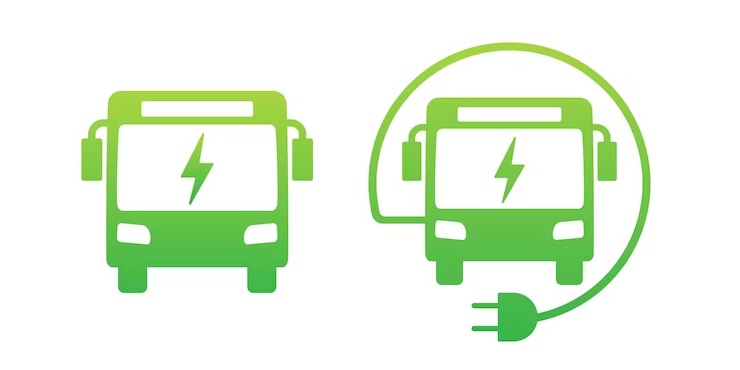How to achieve zero emissions for fleets in state and local entities

An increasing number of organizations are looking for ways to reduce their carbon footprints. For thousands of state and local entities across North America, creating a zero-emission fleet is the most effective way to accomplish this.
Researchers estimate that adopting certain electrification policies could prevent the release of 646 million metric tons of CO2 between 2020 and 2050. Switching public fleets from traditional vehicles to alternative fuels could be a major driver of success.
But what does it take to achieve such a goal for government agencies? How can state and local organizations get started?
Let’s look closer at the benefits of a zero-emissions fleet and how you can achieve such a significant milestone for your own public institution.
Defining zero emissions for state and local fleets
Before you consider the strategies used to transition traditional fleets, you must understand what it means to create, manage, and optimize a zero-emission fleet.
In short, zero-emission fleets are public fleets designed to eliminate carbon emissions through specific vehicles, infrastructure, or policies. The goal is to create more effective transportation methods for government employees, municipal drivers, and other organizational stakeholders.
A government zero-emissions fleet usually includes:
- Electric vehicles (EVs)
- Charging infrastructure
- Rightsizing inventory
The benefits of a zero-emissions fleet include:
- Cleaner air means less smog and smoke in busy urban areas.
- Less pollution (both noise and environmental) is better for people, pets, and the planet.
- Reduced maintenance costs slash repair bills, so you can reallocate your budget to greening initiatives.
- Fewer fuel expenditures reduce reliance on gasoline and save even more money for other focuses.
- Employee and civilian safety can be boosted with better telematics, cleaner fuel, and quieter engines in busy metros.
Keep in mind that managing a zero-emissions fleet requires ongoing refinement and optimization. To succeed, you need to have a plan and multiple strategies to bring you closer to your goal.
Let’s look at a few of these strategies.
Highlighting public fleet strategies to achieve zero emissions
If you’re ready to work toward zero emissions for your state or local fleet, you can use the following suggestions from organizations that have successfully made the switch.
1. Begin by planning your fleet segmentation
It’s rarely feasible for state or local fleets to completely switch from traditional fuel to EVs. That’s why Antelope Valley Transit Authority (AVTA) planned its fleet segmentation before adding new vehicles.
First, AVTA determined the most impactful vehicles to switch out for EVs. Then, it considered a trickle-down approach to slowly switch over the remaining vehicles. By taking a calculated approach to fleet segmentation, AVTA has become North America’s first fully zero-emissions fleet.
2. Consider solar photovoltaic installation
Traditional power grids aren’t always powerful enough to accommodate EV charging stations. To combat this, the United States Marine Corps used PV charging stations across rooftops throughout its Base Camp Blaz in Guam.
This installation proved highly successful for a planned 115 electric government vehicles. The strategic placement enables the PV system to generate 12 MW for a peak load of 8 MW.
3. Factor in power management software
How can you manage the amount of power allocated to EVs? The U.S. Department of Energy’s National Renewable Energy Laboratory (NREL) decided on charge management software. This tool can evenly disperse EV supply equipment (EVSE) loads to reduce peaking while still meeting driver demand.
Charge management provides a practical, efficient, and convenient charging solution that reduces strain on the power grid. It also helps the NREL better manage its 720-kW peak load created by 108 EVSE parking spaces.
4. Decommission heavier vehicles and public transports
If you can’t immediately determine which vehicles to switch for zero-emission vehicles, you may want to consider starting with heavier models first. The Port of Long Beach decided to switch its traditional drayage vehicles for zero-emission alternatives—with impressive results.
The organization purchased several zero-emission cargo transports to serve in its busy port-side fleet. These hydrogen-powered vehicles will greatly reduce pollution and protect the air and waterways around southern California.
5. Consider EV byways
If you need to get your EVs to different locations faster, you may want to consider EV byways. These enable EVs to take faster routes while enjoying convenient access to charging stations.
The Oregon Wine Country EV Byway is one of the best examples. Extending from Gaston to Dundee and from Dayton to Salem and the growing town of Elkton, its mission is to encourage more sustainable forms of tourism without compromising travel times. A network of charging stations stretches across 2,200 miles to help EVs (and public fleet vehicles) get where they need to go even faster.
6. Incorporate proper EV telematics
Telematics is best used alongside sustainability initiatives, which the Masdar Institute of Science and Technology highlighted in a recent research paper. Enabling green telematics allows for more optimized route selections, route-level energy consumption metrics, and even geofencing.
You can use simpler telematics to achieve a similar effect. GPS tracking and in-cab video can be powerful tools when used correctly.
7. Work with cooperative contracts
The best way to create a zero-emissions fleet is to use cooperative contracts to find competitive suppliers. The City of Cincinnati, Ohio, did just that with a close partnership between Climate Mayors, the Electrification Coalition, and Sourcewell.
The existing fleet contained 3,450 vehicles for hauling, transportation, and general maintenance. With the help of Sourcewell and other partners, the city set a goal to acquire twenty all-electric light-duty vehicles by the end of 2020. This initiative saved more than 65,000 gallons of fuel, reducing total greenhouse gas emissions by 1,450,000 pounds of CO2—all without jeopardizing the existing fleet management budget.
Developing leadership in clean transportation with Sourcewell
It’s one thing to design a strategy for zero-emission fleets but quite another to source equipment that makes it a reality. If you’re looking for effective ways to become a leader in the zero-emissions space, we invite you to consider the EV fleet solutions offered by Sourcewell.
Sourcewell makes it easy to follow through with your zero-emissions goals by:
- Offering hundreds of competitively sourced cooperative contracts
- Providing personalized information to guide your next steps
- Encouraging supportive partnerships via Climate Mayors and the Electrification Coalition
Organizations big and small can register with Sourcewell and tap into free resources at any time.
See how easy it is to smoothly adhere to any greening initiatives using Sourcewell’s cooperative purchasing program. Streamline the process by choosing from hundreds of suppliers already on contract. Sourcewell’s procurement experts competitively solicit and award contracts on behalf of 50,000 participating agencies in North America. Check out our contracts here.


